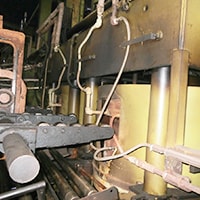How an Industrial Hose Maintenance Plan Could Save Your Plant Thousands
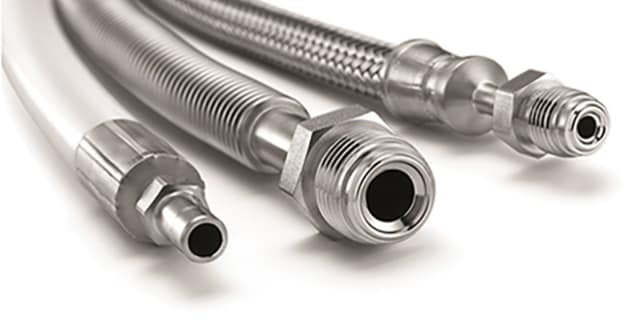
How an Industrial Hose Maintenance Plan Could Save Your Plant Thousands of Dollars
Alice Chin
A common concern among many plant managers and engineers is knowing the proper time to replace industrial hoses. This concern comes with good reason. Waiting too long to replace a hose that needs attention can greatly increase your risk of a failure, potentially leading to safety issues and unplanned downtime. On the other hand, replacing a hose too early — while not a safety risk — can be costly in terms of time and money.
A preventive maintenance plan can help supplement standard operating procedures by providing information on each individual hose in your plant. This means tracking the life and performance of every hose, inspecting them frequently, replacing them proactively, and identifying key replacements to have at your facility. While developing such a plan may seem arduous, the cost-saving benefits make it well worth the upfront time investment.
Each hose in your facility is different due to the application parameters it experiences, and therefore needs a unique replacement interval based on its environment. Everything from pressure to movement demands to nearby equipment should be taken into account.
Consider a process application that uses 50 identical hoses. Half of these hoses are steam-cleaned and wear out after one year. The other half are not cleaned but will likely last five times as long. Placing all the hoses on a five-year maintenance cycle is dangerous and can shut down expensive processes due to unexpected hose failure. However, putting all the hoses on a one-year replacement interval would mean replacing hoses with years of life left in them. How much could the plant save if it increased the replacement interval for the second set of hoses to five years? At a cost of about US$200 per hose, the savings would be about US$20,000 in product costs alone, plus the value from reduced maintenance and downtime.
Steps to Creating a Preventive Industrial Hose Maintenance Plan
While your supplier can provide general inspection and replacement guidelines, your actual replacement intervals will vary based on each hose’s operating environment, materials of construction, and other factors. These replacement intervals cannot be predicted. They can be determined only through observation and careful record-keeping.
1. Identify All Your Hoses
First, perform a full plant audit that includes identifying and tagging every hose. Be thorough and specific, including noting the hose type, part number, process fluid, pressure or temperature ratings, and vendor name and contact information.
In a spreadsheet, log additional details, including each hose’s length, size, core material and construction, reinforcement layers, end connections, mounting, cover type, operating conditions, cleaning procedures, and the date the hose was installed and scheduled for replacement. This process alone can become a valuable addition to your plant’s operating system.
Not sure where to begin? Swagelok’s experienced engineers will visit your facility and evaluate your systems. Improve your plant operations with Swagelok Evaluation and Advisory Services.
2. Track the Lifecycle of Each Hose
Follow a schedule of regular hose inspections, examining each hose at an interval recommended by your supplier. These inspections are visual and rarely require system downtime. Mainly, you are looking for signs of wear, such as scrapes, cuts, corrosion, kinks, and general deterioration. These signs indicate that the hose is ready to be replaced. Note all observations in your spreadsheet.
Once a hose has reached the end of its life, it’s critical to note its service interval. This information provides a known replacement period for that hose.
If a hose fails during operation, document each detail: the location of the failure on the hose, the severity of the break, and how the hose was mounted. These details will help you troubleshoot the failure with your hose supplier and determine how to prevent a reoccurring incident.
3. Eliminate Hose Strain
If a system is in operation at the time of your inspection, identify any known conditions putting strain on your hoses. Look for hoses that rub against equipment, experience pulses, are exposed to external heat sources, or are set up in arrangements that may cause undue strain. These are situations that should be corrected immediately, as they will shorten the service life of your hose or cause failure. Below are common causes of hose strain:
Twisting a hose or bending it on more than one plane
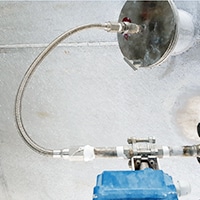
Bending the hose beyond its recommended radius
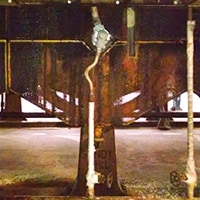
Bending too close to the hose/fitting connection
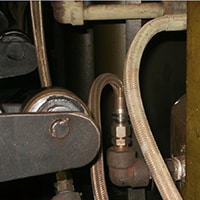
Allowing insufficient hose length so the hose is strained during impulses
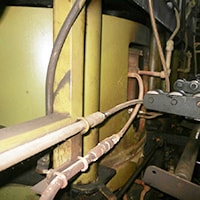
Failing to use elbows and adapters to relieve hose strain on horizontal end connections
4. Identify if protective cover is required
Sometimes hoses protective cover is required. Thermosleeve is good in protecting hose from weld splatter and resists effects of UV light, fire jacket is to provides insulation from internal system fluid temperature extremes, spiral guard is good in protecting hose against abrasion, armor Guard protects against kinking and abrasion, and spring guard is to protects hose against kinking and abrasion. The hoses covers do not change hose technical data. However, when selecting protective cover, it must carefully understand each option’s operation temperature and as well as its main purpose of functionality. For example, thermosleeve is good in protecting hoses from weld splatter, but it is not designed to against abrasion.
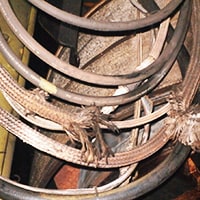
5. Follow Inspection and Replacement Protocols
As you learn the replacement interval for each hose, your hose maintenance plan will begin to take shape. However, even after determining the replacement interval, you should continue with periodic inspections to ensure that a change in system parameters does not place a strain on a hose.
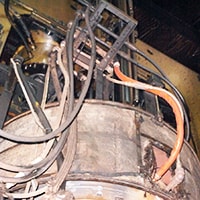
6. Analyze Your Data
Periodically analyze your historical data against your established hose inspection and replacement frequencies to determine if any intervals should be shortened or lengthened for safety or budgetary reasons. Performing a destructive test on a replaced hose can show whether the hose was replaced too soon or too late.
In addition to regular data analysis, if a specific hose is replaced frequently, consider using an alternative design that will offer a longer life. In doing so, verify that the cost-benefit analysis works in your plant’s best interest.
7. Be Prepared with Spares
If you know the replacement interval of your hoses, you can order replacements in advance. Additionally, for certain hose categories, it’s good practice to keep some spares in inventory at your plant:
- Hoses for Critical Safety or Process Applications: It’s imperative to keep readily available spares to correct hose applications that present critical safety hazards or severe downtime potential.
- Hoses that are Likely to Fail: When a hose’s operating environment presents a high likelihood of premature failure, your team will want extra hoses on hand to accommodate frequent replacements. For example, hoses kinking, moving in two planes or experiencing vibration will likely fail earlier than others. A better practice may be to find a more suitable hose for the application or adjust the system completely to remove strain on the hose.
- Hoses for Special Applications: Keep spares of any hoses that are difficult to source due to special materials, lengths, end connections, and other variables. For example, if you know a special-order hose has a three-week lead time, you may even want to inventory two spares for good measure.
Regular inspections and meticulous recordkeeping will require an investment of time. However, a hose maintenance plan could mean significant cost savings and improvements to your plant’s safety. With a plan in place, your team will be able to replace hoses less often while always having a replacement on hand. These outcomes can mean increased profitability, enhanced safety, and fewer delays. Once your plant starts to keep track, the numbers will prove the value of your investment.
For help with hose training, assessing inventory or conducting inspections, contact your local Swagelok Sales and Service Center.
Related Articles
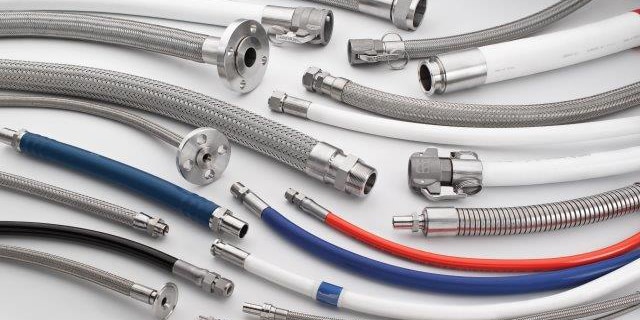
3 Steps to Hose Safety & Lower Plant Costs
Industrial hose safety is often deprioritized during regular plant maintenance. It is important hoses receive the attention they deserve—leaks and wear can put your facility at risk. Learn tips to avoid dangerous situations while lowering plant costs.

Industrial Hose Replacement: Core Tube Material Considerations
When selecting an industrial hose, the first place to start is the core tube—the hose’s innermost layer. Learn how to select the ideal hose for your application with information on core tube materials & wall construction from the experts at Swagelok.

How to Select the Right Hose Reinforcement
Industrial hoses typically contain critical reinforcement layers that contribute to longevity and performance. Learn about different reinforcement layers types and which is best suited for different fluid system applications.


